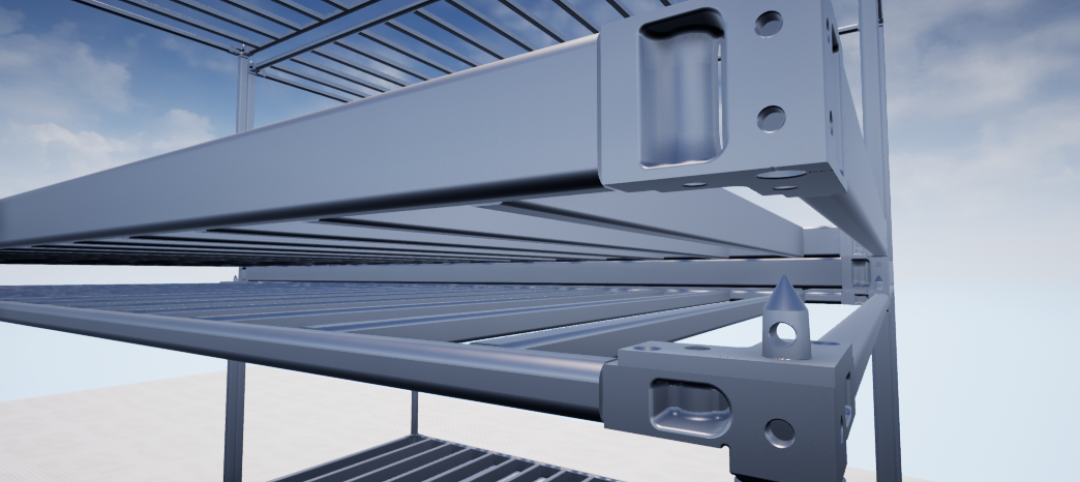Nonresidential construction spending dipped for a second consecutive month, falling 0.4% on a monthly basis in December, according to analysis of U.S. Census Bureau data released by Associated Builders and Contractors (ABC). Nonresidential construction spending totaled $681.2 billion on a seasonally adjusted, annualized basis. November's nonresidential construction spending estimate was revised lower by 0.6% to $683.7 billion.
For a second consecutive month, 12 of 16 nonresidential subsectors experienced spending decreases on a monthly basis. Private nonresidential spending dipped 2.1% for the month, while public sector spending expanded 2.2%.
"December's estimate is a bit unnerving not only because it represents a second consecutive month of spending decline, but also because unusually warm temperatures should have helped to translate into better spending performance," ABC Chief Economist Anirban Basu said. "A number of leading indicators suggest that nonresidential construction spending performance will remain choppy moving forward, both for the broader economy and the nation's nonresidential construction segment, including the Baltic Dry Index, the Conference Board's Index of Leading Economic Indicators and the Architecture Billings Index.
"This is not to suggest that the nonresidential recovery will end in the near term," Basu said. "Most firms continue to report healthy backlog and hiring remains aggressive, implying that many firms are staffing up in order to perform on forthcoming contractual opportunities. However, private credit is beginning to tighten and becoming more expensive. Consumer delinquencies are edging higher and corporate bond defaults have been climbing. Accordingly, many contractors may experience a slowdown in backlog accumulation in 2016, with the 2017-2018 economic outlook remaining decidedly murky."
Only four of 16 nonresidential construction sectors experienced spending increases in December on a monthly basis:
- Spending in the highway and street category expanded by 9.6% on a monthly basis and 11.7% on a yearly basis.
- Communication-related spending increased 4% month over month and 37.2% year over year.
- Sewage and waste disposal-related spending expanded 1.3% for the month, but fell 9.7% from the same time last year.
- Spending in the amusement and recreation category climbed 0.5% on a monthly basis and 9.2% on a year-over-year basis.
Spending in 12 of the nonresidential construction subsectors fell in December on a monthly basis:
- Spending in the power category fell 0.3% from November 2015, but is 7.6% higher than in December 2014.
- Commercial-related construction spending fell 0.6% for the month and 3.2% for the year.
- Educational-related construction spending fell 0.8% on a monthly basis, but expanded 10% on a yearly basis.
- Transportation-related spending fell 0.8% month over month, but expanded 2.3% year over year.
- Lodging-related spending was down 1.3% for the month, but is up 29.1% on a year-ago basis.
- Spending in the office category fell 1.8% from November 2015, but is up 16.6% from December 2014.
- Water supply-related spending fell 2.9% on a monthly basis and 6.6% on a yearly basis.
- Health care-related spending fell 3.2% month over month, but is up 0.4% year over year.
- Spending in the religious category fell 4.1% for the month and 1.7% for the year.
- Public safety-related spending declined 4.6% for the month and 7.4% for the year.
- Manufacturing-related spending fell 7.2% from November 2015, but is 19.6% higher than in December 2014.
- Conservation and development-related spending declined 9.9% on a monthly basis and is 8% lower on a yearly basis.
Related Stories
BD+C University Course | Jul 8, 2019
Shadow box design: To vent or not to vent [AIA course]
A curtain wall shadow box is a spandrel assembly consisting of vision glass at the building exterior and an opaque infill at the interior side of the curtain wall system. This course is worth 1.0 AIA LU/HSW.
Contractors | Jun 26, 2019
Katerra launches apprenticeship program to help develop the future of construction
The program offers nationally recognized, portable construction trade credentials.
Building Tech | Jun 26, 2019
Modular construction can deliver projects 50% faster
Modular construction can deliver projects 20% to 50% faster than traditional methods and drastically reshape how buildings are delivered, according to a new report from McKinsey & Co.
Contractors | Jun 15, 2019
Turner tops off new classroom space at Middle Tennessee State University
The building includes a “command center” for training students to interact with emergency personnel.
Contractors | May 24, 2019
Two versions of a hard hat for the future are ready for production
Clayco worked with a Georgia college to design a hard hat with greater comfort and adaptability.
Contractors | May 20, 2019
SoCal’s oldest GC bounds into second century
C.W. Driver succeeds by sticking to core markets and practices.
Codes and Standards | Apr 25, 2019
Report: Contractors invest $1.6 billion in workforce development annually
ABC members increased training spending 45% from 2013, according to a new report.
Resiliency | Apr 22, 2019
Turner Construction doubles down on jobsite efficiency
The company targets a 50% cut in greenhouse gas emissions and water use from construction activities by 2030.
Building Tech | Apr 19, 2019
Skender, Z Modular reach agreement to fabricate multifamily housing components
Factory to open soon on the southwest side of Chicago.
Contractors | Apr 15, 2019
Do you have a fear of getting 'Uber'd'? Join the club
Exacerbating the AEC talent shortage is the coming mass exodus of baby boomers as they reach retirement age.

















